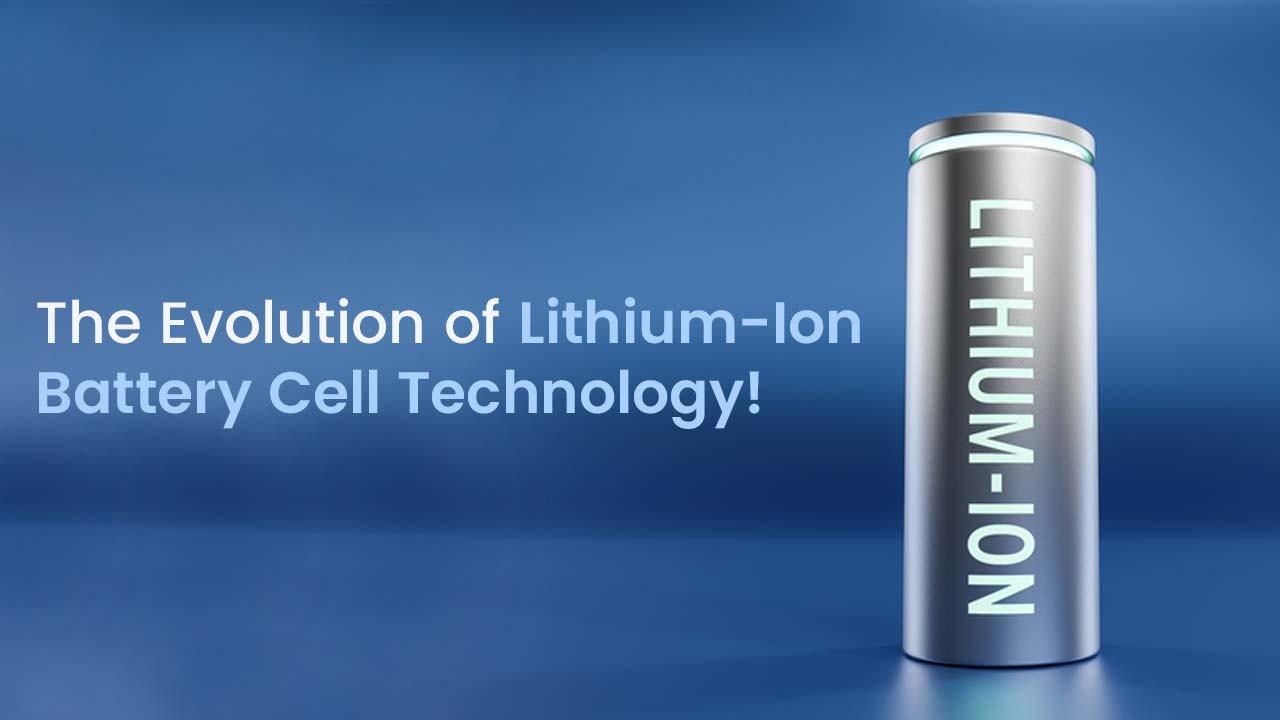
The Fundamental Mechanism Behind Lithium-Ion Battery Functionality
- The three primary process steps involved in producing a lithium-ion battery cell are electrode fabrication, cell assembly, and cell finishing.
- While cell assembly makes a distinction between pouch and cylindrical cells as well as prismatic cells, the steps involved in the electrode manufacturing and cell finishing process are generally independent of the type of cell.
- Each lithium-ion cell’s smallest unit, regardless of cell type, is made up of two electrodes and a separator that keeps the electrodes apart. The ion-conducting electrolyte is situated between them.
Within this article, we will explore various methods employed in the manufacturing of lithium-ion battery cell electrodes.
The Evolution of Lithium-Ion Battery Cell Technology
Current technological advancements will lower the cost of materials and production for lithium-ion batteries while improving their performance.
Product Development
- Variations: Silicon graphite anodes (Si/C), high-nickel batteries
- Inactive parts: Thinner and lighter packages, multilayer separator materials
Fourth generation of technology: metallic lithium anodes and large-format cells

Product Innovation
- Production of electrodes: Laser drying and dry coating
- Cell assembly: cutting and slitting with a laser, creative stacking technique
- Cell finishing: Early quality detection, intelligent forming protocols
Different Techniques for Electrode Manufacturing
Dosing and Mixing
- The process begins by introducing active materials and additives into the mixing vessel. Dry mixing is employed to disperse any heterogeneous phases within the mixture, which is achieved through distributive mixing.
- Following this, the solvent is gradually added, partially or entirely. The mixture undergoes homogenization and deagglomeration via dispersive mixing. Optionally, a binder solution may be introduced and integrated if it’s not being used as an additive.
To eliminate any trapped air within the mixture, a vacuum is applied. The resulting product is referred to as “slurry.” In both stages of the process, energy is supplied through one or more rotating tools.
Coating and Drying
- The slurry is applied to the substrate foil using an application tool, such as a slot die, doctor blade, or anilox roller. This coating process can be done continuously or intermittently, and it allows for coating both the top and bottom of the substrate foil, either simultaneously or sequentially. Typically, a tandem coating method is employed for sequential coating.
- Once the coating is applied, the coated substrate foil is passed through a drying channel. The web can be transported using either rollers or levitation systems, and heat is employed to evaporate the solvent from the coating. To achieve specific temperature requirements, the drying channel is divided into various temperature zones. In cases where toxic solvents are utilized, they are recovered and undergo processing or recycling.
Following the drying process, the web is cooled down to room temperature and wound onto a roll.
Dry Coating
- The term “Dry coating” encompasses various distinct methods, all of which revolve around the dry processing of materials to create an active material layer. Notably, the absence of solvents sets these methods apart from conventional mixing processes.
- Presently, the most promising technologies with the highest potential for rapid industrial adoption are direct calendering and free-standing electrode production. These methods involve the homogenization and preconditioning of the active material through a mixing process. Subsequently, the active material is introduced to a pair of counter-rotating rolls in the form of either powder or granules.
- These rolls move in opposite directions, with the option for differential circumferential speed. This results in the formation of a dry film composed of the active material on the faster-rotating roll. Depending on the specific system, the dry film can be generated first and then either applied to the substrate foil or directly calendered onto it. Typically, before application, the dry film is cut to the desired width.
Calendering and Slitting
- Calendering involves the compression of copper or aluminum foil coated on both sides using a rotating pair of rolls. Prior to calendering, the electrode foil undergoes static discharge and is cleaned using brushes or air streams. The material is compacted by both the top and bottom rolls, generating a precisely defined line pressure.
Following calendering, the electrode web is cleaned and rewound in a roll-to-roll process. Typically, the calendered mother coils are manually transported to the slitting line. Slitting, a separation process, divides a wide electrode web (mother coil) into several smaller electrode webs (daughter coils), often achieved with rolling knives. After the slitting process, each individual daughter coil is cleaned and rewound in a roll-to-roll process.
Vacuum Drying
- The daughter coils, once coated, are placed onto a specialized transport carrier for further handling. Subsequently, these coils are stored within a vacuum dryer, and the drying duration typically spans from approximately eight to 48 hours. Throughout this drying process, any remaining moisture and solvents within the coils are eliminated.
- The reduction of residual moisture is achieved through evaporation at low temperatures, facilitated by maintaining a low total pressure. Upon the completion of the vacuum drying process, the coils are either directly transferred to a dry room or sealed under vacuum conditions. These vacuum dryers often serve as an interface with the dry room, ensuring the preservation of low humidity levels.
- Additionally, it’s possible to operate the vacuum dryers with inert gas to prevent corrosion processes.
In conclusion, the various methods used to manufacture lithium-ion battery electrodes highlight the energy storage industry’s ongoing commitment to efficiency and innovation. These methods, ranging from traditional slurry-based processes to emerging dry and additive manufacturing techniques, all contribute to the development of high-performance and sustainable battery cells. The investigation and improvement of electrode manufacturing techniques will continue to be essential in raising the capacities and availability of lithium-ion batteries, which will power portable electronics, electric cars, and renewable energy systems in the future as technology advances and the need for energy storage solutions rises.
For More Updates Follow Us
WhatsApp – Facebook – Instagram – Twitter – LinkedIn – YouTube
